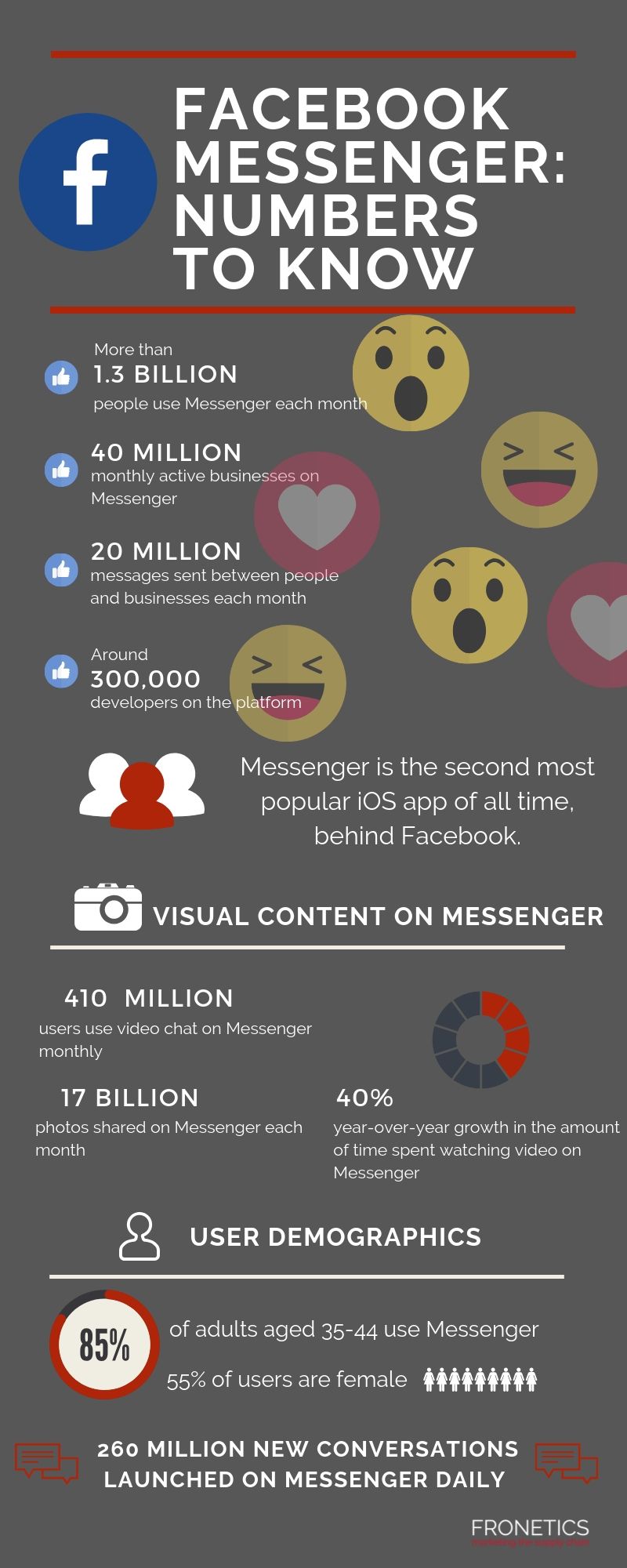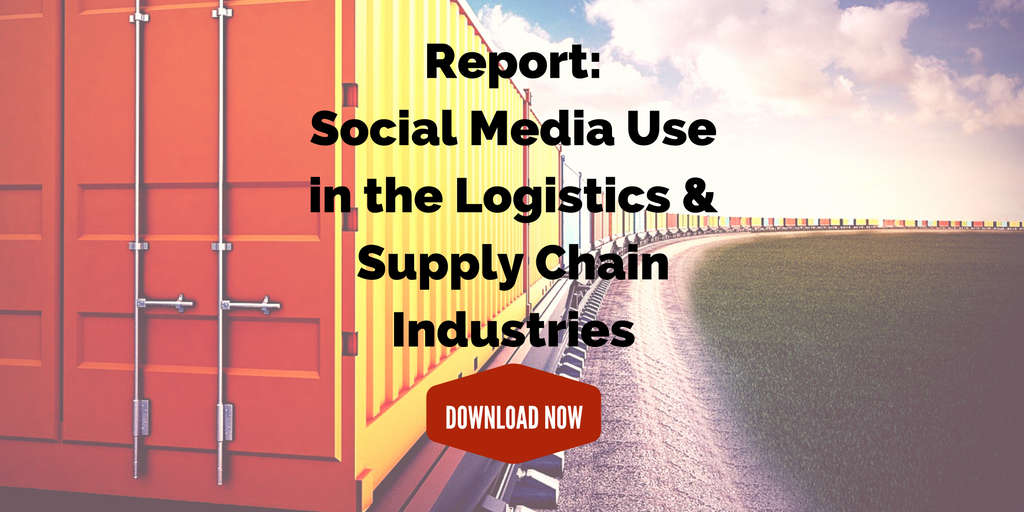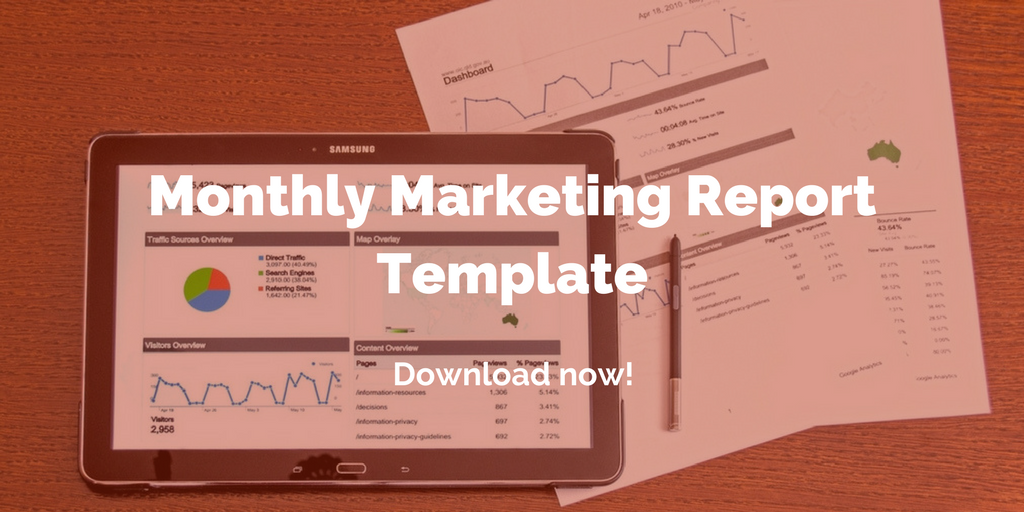
by Jennifer Hart Yim | Oct 29, 2019 | Blog, Logistics, Marketing, Social Media, Supply Chain
As other social networks face unprecedented controversy, LinkedIn is still the best professional social media tool. But too many Supply Chain professionals aren’t getting the most from it.
This guest post comes to us from Argentus Supply Chain Recruiting, a boutique recruitment firm specializing in Supply Chain Management and Procurement.
Awhile back, following Microsoft’s acquisition of LinkedIn, we wrote an article asking “Is LinkedIn in Trouble?” In that post, we identified a few shortcomings that we thought threatened to detract from its user promise as being premier social network for professionals. It was full of spam content that had no relevance to anyone, let alone people looking to network, and it had a somewhat faulty search functionality.
A few years on, and the network is still thriving. A recent article in the New York Times caught our attention, and has us revisiting where LinkedIn stands in today’s social media landscape – for job candidates, hiring managers, and people looking to network in general. Titled, “Why Aren’ Talking About LinkedIn?”, it examines some of the controversies around other social networks, and how LinkedIn has managed to steer clear.
Twitter has gained a reputation for trolling and harassment. Facebook, for its part, has gained a reputation for allowing its data to be compromised, threatening users’ privacy, and for allowing foreign actors to influence the U.S. election. Meanwhile, LinkedIn soldiers on. It’s not the savviest, smoothest social network experience – not that it ever has been – but it’s still one of the most useful.
We’re recruiters who are highly active on LinkedIn (check out our page there, if you haven’t.) From our perspective, the social network is still highly relevant to the career world, whether it’s researching prospects, finding candidates, looking for a job, or networking.
LinkedIn has taken efforts to modernize, and those efforts have reinforced the network’s core promise – helping people connect in a professional capacity, and share thought leadership – while avoiding the disinformation and harassment scandals that plague other social media platforms of similar size. As the Times puts it, “the site hasn’t proved especially useful for mainstreaming disinformation, for example, nor is it an obvious staging ground for organized harassment campaigns.”
Why has Linkedin avoided these issues? A few things set it apart from other social networks:
- Users communicate in a business-appropriate way. They realize that a future colleague, boss or hire could be reading what they post, so they’re less likely to post polarizing material.
- Similarly, LinkedIn isn’t political. Because it’s restricted to professional or professional-like communication, it’s managed to avoid some of the political filter bubbles common to other social networks. Political ads are banned on the platform.
- The majority (82%) of LinkedIn’s revenue comes from premium subscriptions, rather than advertising, which allows LinkedIn to rely less on mining user data for revenue. LinkedIn certainly holds a tremendous amount of its users’ data, but this might help explain why it’s had fewer data and privacy-related scandals than other social networks.
LinkedIn has been crisis free, and that’s allowed it to continue to chug along, owning the considerable niche that it’s owned since 2003. Other job sites and career apps have flourished – and floundered – in the meantime, but LinkedIn remains.
In 2019, the network has done a lot to address the biggest shortcomings we wrote about before. Spam posts are much reduced. The interface is lean and responsive, having worked out most of the kinks involved in its latest redesign. As the Times article describes, if you go on LinkedIn today, you see promotional content, but you also see a lot of people using the network for thoughtful professional communication. You see a lot of people who use its powerful content creation channels like LinkedIn Publisher and native video to boost their personal brand and generate career opportunities. It’s powerful not just when looking for a job: people use it to connect with possible suppliers, identify talent, learn best practices, network, and more.
Yet so many professionals still aren’t getting the most out of Linkedin.
In Supply Chain and Procurement, which is our area of recruitment specialty, some of the best candidates have highly inactive profiles. They don’t go into detail about accomplishments (e.g. major projects, cost savings, business transformation). Some of these candidates still don’t treat LinkedIn as a vital tool to build their personal brand, and see it more as an “online resume” to be updated whenever they’re looking for a job. Their profiles are almost empty.
We still find those candidates for our clients. Boolean searches are a powerful tool, as is the tried and true method of talking to as many people as possible. But we often wonder: how many other great Supply Chain professionals are out there who don’t put in the small amount of time required to get on our radar by being more active about their personal branding?
Consider your daily time allotted to social media. How much of it goes to networks like Facebook and Twitter? Isn’t it worth it to take a small chunk of that time and post about career-related topics in a more mentally healthy environment, and boost your brand in the process?
Say you’re a specialist. A Strategic Sourcing professional with expertise in facilities and real estate Procurement, or a Supply Chain analyst who’s highly skilled with SAP and other Enterprise Resource Planning (ERP) applications. Those are requirements our clients – some of the top companies in the world – have all the time. By getting more active on LinkedIn, you’re owning your niche, and rising to the top when people search for people with your speciality. Recruiters, but also suppliers, and colleagues. And trust us, people are searching. Every day.
So what small steps can you take to treat LinkedIn more like a marketing tool, and less like a “set it and forget it” online resume?
- If you aren’t connected to many other Supply Chain professionals, expand your network. Most people are open to unsolicited connection requests if they’re not transactional. Reach out to connect with people at interesting organizations, and start conversations that aren’t about looking for a job.
- Share relevant content with your network, with your comments, and attempt to start discussions. LinkedIn has a new “Top News” feature – on the sidebar of the homepage – which can give you some current topics. Pick things that make you think, and share your thoughts. Publications like Supply Chain Dive, SCMDojo, and Procurious have lots of great thought-provoking professional content to look at as well.
- Think about publishing an article or two through LinkedIn Publisher. What big issues or changes are you facing in your Supply Chain practice? What are you most excited about? A longer-form article can help you organize your thoughts and show off expertise.
- Make sure that your profile has relevant accomplishments, and detailed keywords related to your niche (e.g. the categories you work on in Procurement).
- Be persistent, but not relentless. The LinkedIn algorithm – in our experience – tends to reward people who are more active. But don’t post all over the place indiscriminately – pick and choose topics about which you have something to say.
But this is just the tip of the iceberg. If you’re a Supply Chain or HR professional, how is LinkedIn is working for you in 2019, either in looking for jobs, or hiring? Let us know in the comments!
Related posts:


by Fronetics | Oct 24, 2019 | Blog, Marketing, Social Media
Facebook Messenger is the latest trend in chatbots for the supply chain. Here are powerful numbers to prove why your brand needs to be active on the messaging platform.
Patience is a virtue of the past. Today’s buyers want (and expect) marketers to actively engage with them throughout the purchasing journey. And offering them generic information won’t work — they want personalized communications based on who they are, what they have purchased in the past, and what they are interested in buying. Businesses can no longer afford a one-size-fits-all communication strategy.
The focus has shifted from passive marketing to engagement, which has marketers scrambling to be everywhere, at all times, to ensure a positive customer experience. In response, we’ve seen an increase in chatbot usage in the supply chain and logistics industries. Chatbots help improve the customer experience through automated systems that emulate human conversation.
Chatbots rely on the popularity of messaging apps. And, luckily for marketers, messaging app usage is on the rise:
- There were 2.18 billion messaging app users globally in 2019. (Statista)
- At the end of 2018, 78% of the world’s smartphone users were messaging every month. (Facebook)
- By 2021, it’s predicted that the global user base for mobile messaging apps will have risen by a further 23%. (Facebook)
- People share more than 17 billion photos on messaging apps every month. (Mobile Monkey)
And though WhatsApp has the highest percentage of users worldwide, Facebook Messenger has taken over as the most popular messaging app in the U.S. With over 1.3 billion monthly users, this powerful messaging platform holds a lot of potential for marketers.
Even though marketers know that Facebook Messenger is a platform they can no longer ignore, supply chain and logistics brands have been slower to jump on board. But if you’re questioning if you should be using Facebook Messenger to engage with audiences, the answer is yes.
Supply chain businesses can use this platform to deliver content, engage with customers one on one, and offer superior personalized customer service, all of which result in high-quality relationships and leads.
Here are some staggering numbers to back up our point.

(Made with Canva)
Final thoughts
What was once thought of a teen social app, Facebook Messenger is now dominating the business world with increasing popularity and no sign of slowing down. In fact, we as a brand have found huge success using Messenger to engage with new leads. In the first 24 hours of using the platform, we were able to set up a meeting with a new prospect. That was just in the first 24 hours. This prospect turned out to be our next client, and the initial connection was all made through Facebook Messenger.
Related posts:


by Fronetics | Oct 17, 2019 | Blog, Marketing, SEO
Search intent looks at the ‘why’ behind a search. If you’re looking to improve your website ranking, here’s how search intent affects SEO.
Highlights:
- If you truly want to rank at the top of search results, you’ve got to shift your thinking in terms of topic clusters.
- Think about your buyer personas. What kinds of queries they’re typing into Google – not just the actual words but the intent behind the keywords?
- Then start creating content to answer those questions in different formats like video, blog, and infographics.
Video transcript:
I’m Elizabeth Hines from Fronetics, and today’s topic is search intent and how it affects SEO.
I keep saying that trying to rank for certain keywords is a really outdated method of SEO. If you truly want to rank at the top of search results, you’ve got to shift your thinking in terms of topic clusters. And you should develop those topic clusters based on something called search intent.
Now search intent is the why behind a search query. What that means is why did the person conduct this search in the first place. There are 4 types:
- Informational: when a user is searching for specific information.
- Navigational: when a user is looking for a specific website
- Transactional: when a user is looking to make a purchase.
- Commercial investigation: when a user is researching products or services but they’re not yet ready to make a purchase. They might be looking for reviews and comparisons.
So, how can you optimize your website to better serve search intent?
Think about your buyer personas. What kinds of queries they’re typing into Google – not just the actual words but the intent behind the keywords? Are they trying to solve a problem, like, how can I extend battery life on my forklifts? Are they trying to understand how new federal regulations or mandates might impact their business? Or, are they trying to budget for a new solution and researching pricing?
The next step is creating content to answer those questions. Try answering the question in several different formats — long-form content, blogs, video, infographics. Creating this like of content with search intent in mind is more likely to get you ranking higher in Google search results than thinking about individual keywords and phrases.
For more information, visit us at our website at fronetics.com.
Related posts:


by Fronetics | Oct 15, 2019 | Blog, Content Marketing, Manufacturing & Distribution, Marketing, Supply Chain
The analog supply chain model is outmoded and inefficient. Here’s how digital transformation is reinventing manufacturing.
Highlights:
- Manufacturers are increasingly adopting artificial intelligence and machine learning technologies.
- The traditional analog supply chain model is unable to compete with digital disruptors in a volatile market.
- Digital transformation empowers manufacturers to create sought-after personalized experiences for buyers.
Digital transformation isn’t just the latest buzzword in supply chain circles. It’s an ongoing trend that’s revolutionizing manufacturing and supply chain efficiency. According to a recent report from Accenture, 78% of CFOs are spearheading initiatives to improve efficiency through adoption of digital technology.
Digital transformation empowers manufacturers to meet the evolving demands of a customer base with rising expectations for customer service. The digital technologies that are emerging today offer analytics that are vital for forecasting and understanding how to shift the balance of supply and demand.
3 ways that the analog supply chain model is outdated
Supply chain management expert Frank Meerkamp writes, “The traditional supply chain is a tapestry built on an outdated analog network – yet it exists in a digital world.” The difficult truth is that in today’s climate of rapidly shifting market demands and an increasingly interconnected world, manufacturers must embrace digital transformation or be left behind.
Before we look at how digital transformation can benefit manufacturers, let’s take a moment to examine the challenges presented by an outdated analog supply chain.
1) Market volatility
Today’s markets move at a breakneck pace. Thanks to a constantly shifting geopolitical landscape, changing regulations and sanctions, and the unpredictability of cost and supply, manufacturers face market volatility, uncertainty, and a high level of risk. The analog supply chain model leaves companies without the agility to respond and pivot quickly and to operate efficiently on a global or regional scale.
2) Competition from digital disruptors
Perhaps the most powerful example of the way in which digital disruptors are challenging legacy leaders is the Amazon effect. Amazon has effectively situated itself as an innovator and easily has outpaced rivals in multiple sectors. Companies that continue to embrace an analog supply chain model simply cannot compete with those that have fully embraced digital transformation.
3) Rising customer expectations
While it can be tempting for B2B companies to bury their heads in the sand, believing that digital marketing is purely a B2C necessity, the reality is that supply chain companies must embrace digital marketing as part of their digital transformation. Buyers expect hyper-personalized experiences, as well as customized products, and the kind of execution that’s impossible for manufactures to deliver within the analog supply chain framework.
4 ways digital transformation addresses today’s challenges for manufacturers
As the complexity of the supply chain increases, embracing digital transformation is the clearest path to success for manufacturers. While companies that cling to an outdated analogue model struggle with eroding margins and an inability to compete, those that establish “a data-driven supply chain,” writes Meerkamp, “can gain advantages in increased forecasting accuracy, identifying and resolving issues in real time, creating new segmentations, and delivering on consumer requirements with speed, specificity, and scale.”
In short, digital transformation uses data to drive visibility and agility for manufacturers, allowing them to operate efficiently and profitably.
1) Establishing visibility and centralized control
The AI and machine-learning technologies available today enable manufacturers to meet the challenges presented by an increasingly complex supply chain. Massive sets of data can be captured and processed, providing invaluable real-time visibility. Not only that, but manufacturers can leverage this visibility to centralize data and decision-making.
2) Creating new performance engines
Thanks to the ability of AI technologies to process enormous quantities of data, digital transformation enables “powerful resolution engines, based on real-time root-cause analyses, to automate the execution of supply chain functions, and optimize transactions to meet strategic objectives,” says Meerkamp. These technologies facilitate the forecasting and immediate decision-making necessary for manufacturers to operate efficiently.
3) Facilitating agility
Today’s marketplace moves faster than ever, and market forces are constantly shifting. Agility has never been more important for companies to compete. Intelligent technologies allow supply chain companies to establish a management model that is collaborative, data-driven, and platform-based. Digital transformation enables the sharing of qualitative information as well as real-time data and implications. This in turns enables agile management, ready to meet the shifting demands of the marketplace.
4) Developing personalization and flexibility
One of the biggest challenges manufacturers face today is the increasing buyer expectations of personalized experiences. AI technology enables the creation of segmentation strategies, addressing buyers’ personalized needs based on various factors, including channel, location, and service level. Real-time visibility into market data also leads to greater insight into buyers’ needs and how to meet them.
Organizations that embrace digital transformation are empowered to create personalized experiences for their customers and operate with the agility, visibility, and centralization necessary to compete in today’s marketplace.
Related posts:


by Fronetics | Oct 10, 2019 | Blog, Content Marketing, Logistics, Marketing, Robotics & Automation, Supply Chain
Supply chain companies are beginning to use robotics to boost warehouse efficiency and drive profits thanks to new automated technologies.
Highlights:
- High-res cameras, pressure sensors, navigation lasers, and acoustic warning indicators allow automated devices to navigate warehouses efficiently and autonomously.
- Robotics offers enhanced efficiency for both warehouse capability and predictive supply chain management.
- After major investments in automated fulfillment centers, Amazon has seen a 50% increase in capacity when compared to facilities that don’t use robotics.
A recent Information Services Group (ISG) study suggests that something big is happening: 72% of information services (IS) enterprises plan to increase their investment in robotics by the end of the 2019. Why? Because automation and IS are a natural fit.
Leading companies worldwide are beginning to use robotics to boost their warehouse efficiency and forecasting capabilities. And an improving price-to-performance ratio associated with robotics technology means that usage is sure to continue expanding.
The advantages of automation
New automated technologies are a game-changer. Until recently, available robotic devices were stationary and couldn’t interact visually with their surroundings or respond to unexpected inputs. Today, robots are mobile and collaborative. High-res cameras, pressure sensors, navigation lasers, and acoustic warning indicators allow automated devices to navigate warehouses efficiently and autonomously.
Recent technology upgrades include software that causes a robot to cease activity temporarily if it encounters an unexpected object or input, meaning that these devices can safely work alongside humans. Whereas earlier robots were used mainly to transfer objects from one place to another, more recent technology can enhance tasks ranging from managing inventory to retrieving, assembling, and packing orders.
Industry leaders have invested in automated warehouse management systems (WMS) with undeniable results. After major investments in automated fulfillment centers, Amazon has seen a 50% increase in capacity when compared to facilities that don’t use robotics. Amazon has even acquired the company that creates its robots, indicating Amazon’s confidence that the continued production and development of automated technology will play a big part in their future.
JD.com, China’s largest online retailer, has gone even further. Boasting the world’s first fully automated e-commerce warehouse, JD has equipped the 43,000-square-foot facility with 20 industrial robots that allow the company to provide same- and next-day delivery to more than 1 billion customers. Whereas a standard warehouse of that size would require nearly 500 workers, JD employs just 5.
Streamlining operational staff offers a big pay-off. On average, a warehouse employee wastes almost 7 weeks per year in unnecessary motion, which adds up overall to $4.3 billion in labor expenses. For employees, simply walking around in the warehouse accounts for 50% of the time involved in retrieving orders and checking inventories. Coupled with the potential for human error, the superior efficiency of robots makes it a question of “when?” rather than “if?” automation will become the new norm in parcel-sorting hubs and distribution centers.
Automated guided vehicles
The robotics revolution is already underway. One of the most widespread and effective uses of robots in warehouses is the automated guided vehicle (AGV). These self-driving vehicles are rendering expensive and single-use equipment like conveyor belts and large loading vehicles obsolete. Battery-monitoring systems send AGVs back to their charging ports when necessary, maximizing the efficiency of their operation. AGVs can be directed by voice or programmed to retrieve orders, guided by physical markers, magnets, and vision systems. In addition to navigating a warehouse floor more quickly and efficiently than human employees, AGVs are also capable of lifting and transporting much heavier weights, allowing for a larger number of orders to be retrieved in the same amount of time.
The advantages of AGVs run deeper than warehouse efficiency, however, and extend to logistics operations as well. AGVs track and update inventory records in real time as they retrieve orders. Ordinarily, the immense amount of data involved in running supply chains creates inefficiency and requires additional personnel to monitor inventory levels and place orders. The AGV integrates these tasks into a streamlined operation, as it can retrieve items as soon as order data is received and updates inventory levels instantaneously, even placing automatic purchases. This allows for improved forecasting and faster inventory refill.
Effi-BOT & Sawyer
That’s all very well in theory. But how does it work in practice?
DHL has led the pack in using robots to assist employees with repetitive and physically demanding tasks. Effi-BOT, an AGV that follows employees through DHL warehouses, takes over the physical work involved in picking orders. The use of Effi-BOT has allowed DHL to move from single-order picking to a multi-order model, and helps track complex inventory dynamics.
Another robot, Sawyer, has illustrated how automation can be used in flexible ways to accommodate ever-changing purchasing and order patterns involved in e-commerce. Sawyer’s collaborative capabilities allow it to handle repetitive aspects of the co-packing process. By adding Sawyer to its existing workforce, DHL has been able to use the robot to flexibly adjust to unpredictable order data.
Managing robotics
Typically, the inventory and performance data generated by devices such as Sawyer and Effi-BOT is aggregated in a dashboard that supply chain managers can use to check inventory levels and review automated requests sent from robotic devices to purchasing departments. By integrating data recorded in real time by automated devices, dashboards make larger and larger segments of the supply chain visible, allowing managers to pinpoint the source of problems, such as a delayed order from a supplier’s factory.
Robotics thus offers enhanced efficiency for both warehouse capability and predictive supply chain management. While the regulatory policies surrounding the use of robotics in the workplace are as yet uncertain, there can be no doubt that automation is already re-shaping the supply chain. Successful companies of the future will be the ones that find ways of taking advantage of new robotics technology today.
This post originally appeared on EBN Online.
Related posts:


by Fronetics | Oct 8, 2019 | Blog, Content Marketing, Logistics, Marketing, Supply Chain
Digital marketing helps increase brand awareness, convert leads, and drive measurable business value. But that doesn’t mean it’s always easy to execute. Here are 4 digital marketing failures and how to get back on track.
Highlights:
- While digital marketing is extremely effective, proving ROI is often the top challenge for marketers.
- If your content isn’t SEO-friendly, readers may not even have the chance to see what you’re writing because it is so far down in their search results.
- Though it’s often more time consuming than written content, visual content, including infographics and video, are the most popular form of content right now.
B2B buyers want information, and they’re inundated with it. Are you ready for this? There are 2.5 quintillion bytes of data created each day, and that number is only accelerating with the growth of the Internet of Things (IoT). Over the last two years alone, 90% of the data in the world was generated.
Because of at its core it leverages data to target audiences, digital marketing has been a successful solution for marketers. But it’s not that easy.
Here at Fronetics, we’re big believers in analytics. And while digital marketing is extremely effective, proving ROI is often the top challenge for marketers. Without data to back up your efforts, how do you prove your digital marketing strategy is working? And with all those quintillion bytes of data being created every day, how do you stand out from competitors?
The simple answer is using analytics to evaluate your efforts and to determine what is working and what needs to be tweaked. Digital marketing strategies have to be fluid and easily adaptive to change. Companies have to grow and shift with the times, which means that marketing plans have to evolve.
Here are four digital marketing failures, which you can easily identify through analytics, and how to fix them.
4 digital marketing failures (and how to make them right)
1.Lack of strategy
Many marketers understand the power of digital marketing but think they can jump in without a strategy. And not just a strategy that you thought of over coffee, but an actual documented strategy. Why? Because a documented digital marketing strategy will help you work smarter and more effectively.
In fact, according to the Content Marketing Institute, those with a documented content marketing strategy:
- Are far more likely to consider themselves effective at digital marketing
- Feel significantly less challenged with every aspect of digital marketing
- Generally, consider themselves more effective in their use of all digital marketing tactics and social media channels
- Were able to justify spending a higher percentage of their marketing budget on content marketing
Having a fundamental understating of your digital marketing plan and a strategy for executing that plan is crucial for success.
2. No search engine optimization
Google is responsible for 94% of total organic traffic. That’s almost ALL organic traffic. SEO means creating content for your digital assets so they will be prioritized by Google in search queries related to your brand or products. It’s time for digital marketers to learn the basics of Google’s algorithms and understand how the content they’re creating can rank better against the competition.
61% of marketers say improving SEO and growing their organic presence is their top inbound marketing priority. If your content isn’t SEO-friendly, readers may not even have the chance to see what you’re writing because it is so far down in their search results.
3. Quality is lacking
While this seems obvious, it’s worth repeating. If the quality of your content is bad, no one will read it, regardless of what value it offers. The same goes for content about which you find yourself saying, “it works,” or “it’s fine!” If there are 27 million options, who would choose “fine?”
Do an honest evaluation of your digital assets, or have a neutral outside party do so for you. Is it original, informative, and well-written? Make sure that your copy is edited, and that it is free from grammatical errors, spelling mistakes, and awkward phrasing. If you want people to read your content, you should make sure that it’s worth reading.
And don’t shy away from visual content. Though it’s often more time consuming than written content, visual content, including infographics and video, are the most popular form of content right now.
4. Lack of posting consistency
Inconsistently publishing content is one of the primary reasons readers become disengaged with a particular brand. Having consistent, high-quality content helps establish your company as a thought leader in your industry. Even publishing one more blog post a week can significantly boost your readership.
Try experimenting with the amount of content you publish per week. For example, if you currently publish two times a week, try bumping it up to three times for one month. The following month, maybe you try bumping it to four. You’ll find your sweet spot when you’re increasing engagement but are still able to handle the production schedule and it’s not impacting the quality of your content.
What other digital marketing failures have you encountered?
Related posts:












